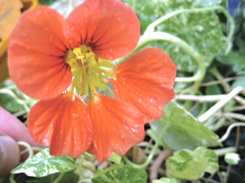Why consider eating edible weeds?
Don’t we have enough abundant sources of food? Isn’t it a pain foraging for weeds? Surely they taste pretty ordinary? Surely they aren’t nutritious? How on earth would I cook them? Only people who can’t afford ‘real’ food would eat edible weeds, wouldn’t they?
A bit of history
In Australia, many weeds came out with the First Fleet (1788), in soil, crop seed or attached to clothing. Only 14 years later, botanists found most English weeds growing here.
Australia’s colonial pioneers ate wild greens to combat scurvy when other foods were scarce. Other ‘weeds’ were native to Australia.
Why the renewed interest in Edible Weeds?
Because they are…
- Abundant – they grow everywhere!
- Free – just find them and pick them!
- Easy – they grow without any effort from you!
- Nutritious – many are more nutritious than things you grow in your veggie patch!
- TASTE GREAT!
Many of these plants have been eaten or used for their medicinal properties for thousands of years.
In many countries some are still considered delicacies today!
How many species of edible plants are there?
How many SPECIES of edible plants are there on the planet? Thought starter … … carrots are ONE species of edible plant Answer…There are over 20,000 species of edible plants!!! How many do we usually eat today? About 20 species of edible plants! Our plant diet has become more and more narrow. Edible weeds are a way to begin to bring that richness back into our diet.
CARROTS are one species with… over 40 different seeds available – different colours, shapes, sizes, tastes, textures. But most of the carrots in our supermarkets and fruit shops are ONE TYPE – Nantes.
The Weeds !
The edible weeds around us are too numerous to mention them all quickly! Some common favourites are:
- mallow
- milk thistle / sow thistle
- cleavers
- clover
- oxalis
- onion weed / three cornered leek
- catsear/flatweed
- dandelion
- purslane
- wild lettuce
- wild radish





